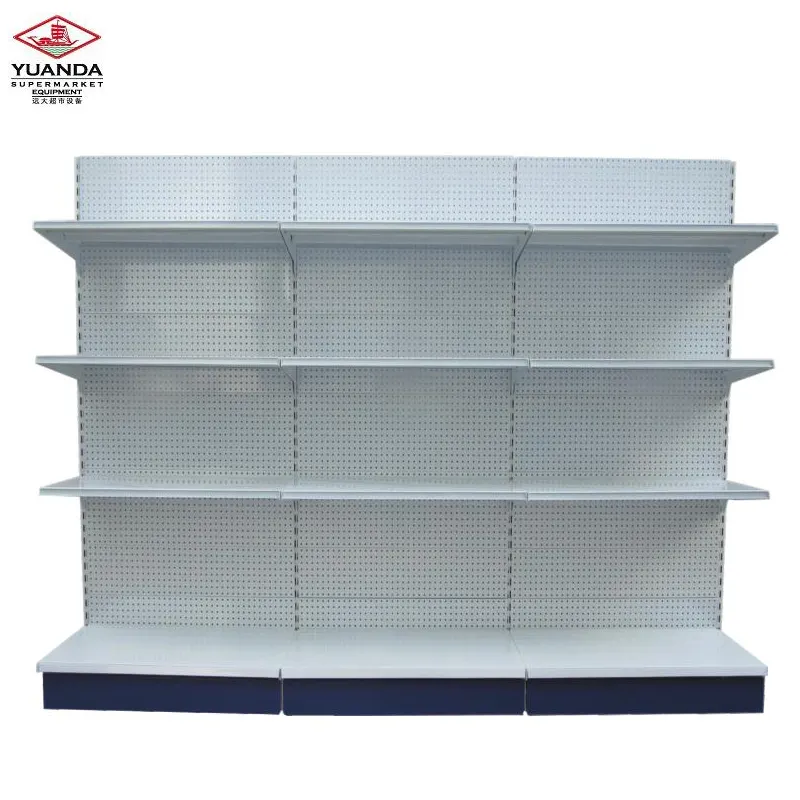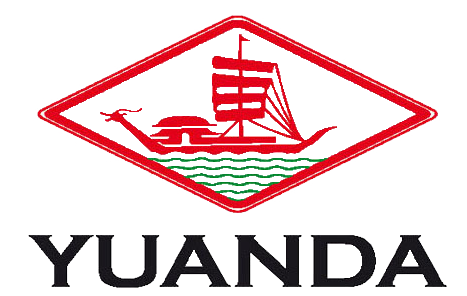Key Factors When Selecting Produce Racks
Assessing Your Store's Storage Needs
Picking out produce racks requires looking at what kind of storage space is actually needed in the store. How much stuff moves through daily matters a lot too. Some places might deal with around 100 items while others handle closer to 500 each day, so rack sizes definitely need to match this range. Certain products matter as well. Big apples or boxes of leafy greens need different kinds of support compared to smaller items arranged on multiple levels. Summer brings all sorts of fresh fruit coming in, which means extra room for display sometimes. Stores that track these patterns tend to find their storage systems work better when they fit real world conditions instead of just guessing. Good rack choices make sure everything fits properly and customers can actually see what's available without having to dig through clutter.
Evaluating Space and Layout Constraints
Before picking out produce racks for the store, it makes sense to look at available space and how things are laid out right now. Start by grabbing a tape measure and checking those dimensions so we know what size racks will fit without making customers bump into each other. Aisles need to stay open enough for people to walk through comfortably, probably around three or four feet minimum. Take another look at where everything stands currently too. Maybe rearranging some displays could make shopping easier for folks. Retailers who thoughtfully plan their floor space often see better results at checkout. And don't forget about safety stuff either. Fire exits must stay unblocked, and nobody wants bananas falling from high shelves onto someone's head. Getting this right means matching our fresh produce setup to actual store conditions, keeping shoppers happy and everyone walking away safely.
Types of Produce Racks for Different Needs
Heavy-Duty Racks for High-Capacity Storage
For stores dealing with large volumes of goods, heavy duty racks make all the difference when it comes to storage capacity. These industrial strength units can hold around 1000 lbs each, so they work great for items that take up a lot of space or weigh heavily. Most manufacturers build them from reinforced steel frames because this material stands up well to constant use day after day. Many grocery chains report better sales figures after switching to these robust systems since they allow staff to organize stock more efficiently while still presenting products attractively to shoppers. Stores that upgrade their shelving often find themselves handling operations smoother overall, plus customers tend to notice the difference in presentation quality too.
Space-Solving Compact and Mobile Designs
Compact racks provide smart storage solutions that maximize available space while still showcasing products effectively without making shoppers feel crowded. Many of these units fit right into corners or along walls where traditional shelving wouldn't work so well, making them ideal for small retail spaces or outlets with minimal square footage. What makes mobile racks especially valuable is their ability to move around easily. Retailers often roll them out during holiday seasons or special sales events, creating fresh displays whenever needed. Stores report seeing around a 20% boost in what customers actually notice when items are displayed this way. The combination of mobility and compact design lets businesses tweak their layouts season after season, keeping the shopping environment interesting and responsive to market trends.

Material Considerations for Durability and Maintenance
Comparing Metal vs. Wooden Produce Racks
Picking out produce racks means thinking about materials if stores want something that lasts and stays looking good. Metal racks have become popular because they hold up under weight without bending or breaking. They also wipe down easily which matters a lot in grocery stores where cleanliness counts. Wood racks bring a different vibe though. Many small farmers markets still use them since they look warm and inviting, but owners know these need constant attention. Regular scrubbing and occasional sanding keeps wood from getting damaged over time. Metal stands up better against moisture and temperature changes that might spoil fruits and veggies, whereas wooden ones tend to attract pests unless properly sealed. Most big chain supermarkets have switched to metal lately because it saves money long term despite higher upfront costs. However, specialty shops with artisanal products continue using hand-carved wooden displays since customers associate them with quality and tradition. The decision really comes down to what kind of image a business wants to project alongside practical considerations about daily operations.
Weather-Resistant Options for Outdoor Use
The materials selected for outdoor produce stands really matter when it comes to standing up to Mother Nature's moods. Good quality weather resistant racks are built to handle whatever climate throws at them, so they don't start rusting or rotting away over time. Most commonly used options today are either metal with special coatings or wood that has been chemically treated. These materials can take a beating from rain, sunshine, and those annoying temperature swings we all hate. Many successful markets that rely heavily on outside displays have found that coated metal racks work best for them. They keep looking good even after months of exposure and won't rust because of those protective layers applied during manufacturing. Treated wood does give off that rustic charm many shoppers appreciate, though it needs regular sealing to maintain its appearance. Take a look at any thriving farmers market across town and notice how their stands stay in great condition throughout all seasons. When businesses invest properly in these durable materials, they protect their goods from damage and actually boost profits since there's less downtime replacing broken equipment.
Maximizing Display Impact with Produce Racks
Arranging Products for Optimal Visibility
How we arrange fruits and veggies on display makes a real difference for both selling more stuff and keeping shoppers happy. Putting those hot sellers right where people look first tends to make folks grab them on impulse. When customers walk past, their eyes naturally go straight to those eye level spots, making it easier for them to pick something up quickly. We also find that matching colors works wonders too. Bright red apples next to green lettuce catches attention and gets people looking around at what else is fresh that day. Studies from grocery chains indicate that smart placement can bump sales anywhere between 15% to almost a quarter more per section. That's why stores spend so much time thinking about how things are laid out across all their shelves.
Lighting and Signage Integration Tips
Good lighting combined with smart signage makes all the difference when it comes to showcasing fruits and vegetables. When shoppers walk past a display, the right amount of light can make apples look crisp and berries appear freshly picked, which naturally draws people closer. Many stores have switched to LED lighting lately because they save money on electricity bills while making colors pop better than old fashioned bulbs. Signs matter too. Clear labels showing prices and what's in season help customers navigate without getting frustrated. A well designed sign system means shoppers spend less time hunting around and more time buying what they came for. Stores that get this right see noticeable improvements in sales over time.
Budget-Friendly Produce Rack Solutions
Balancing Cost and Quality in Purchases
Getting the right balance between what something costs and how good it is matters a lot when buying produce racks if we want to save money in the long run. Sure, spending more on better quality racks might look steep at first glance, but these tend to last much longer and don't need replacing so often. Most folks find they pay about 10 to maybe even 20 percent extra for racks built with better materials, yet this usually pays off down the road since there's less hassle and expense from constantly swapping out damaged ones. Looking at everything that goes into owning something beyond just the sticker price makes sense here too. Think about all those times someone has to fix or replace broken parts. That's why smart business owners focus on getting decent quality stuff from the start rather than cutting corners now and paying more later.
Long-Term Savings Through Durable Investments
Putting money into sturdy produce racks actually pays off over time because they need less fixing and upkeep. Maintenance costs drop around 30% with quality racks. That extra cash left in the budget can go toward buying more stock or making other wise business moves. Most rack makers back their products with solid warranties these days. Makes sense really since they know their stuff lasts longer than cheap alternatives. When fruits and veggies sit nicely arranged on strong displays instead of flopping around, shoppers tend to buy more. People just feel better about purchasing from neat, organized setups. So yeah, spending on durable racks isn't just about saving dollars in the long run either. They help stores run smoother day to day while keeping customers happy at the same time.
FAQ
What are the key factors to consider when selecting produce racks?
Key factors include assessing storage needs, evaluating space and layout constraints, choosing the right type and material of racks, maximizing display impact, and considering budget-friendly solutions.
How do produce rack materials affect durability?
Metal racks are durable and easy to maintain, ideal for heavy loads, whereas wooden racks offer aesthetic appeal but require more upkeep.
Why is it important to assess your store's layout before choosing produce racks?
Assessing the layout helps optimize customer flow, enhance shopping experience, and comply with safety regulations.
What are the benefits of using heavy-duty racks?
Heavy-duty racks support high-capacity storage, manage inventory efficiently, and improve sales by showcasing more produce.
How do lighting and signage improve produce displays?
They enhance produce freshness perception, guide customer navigation, and encourage purchase decisions by providing clear information.

